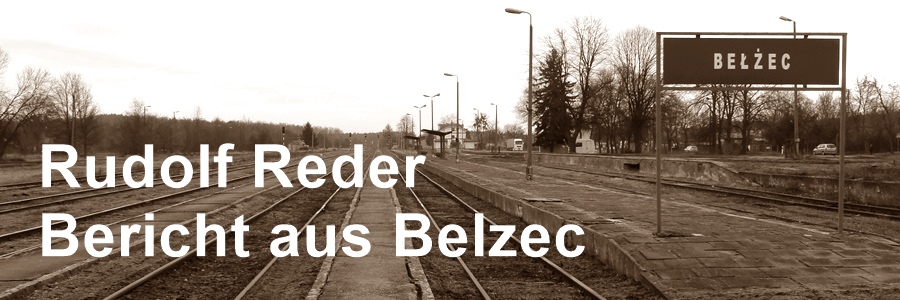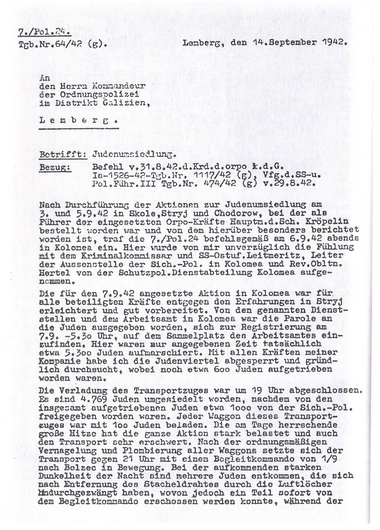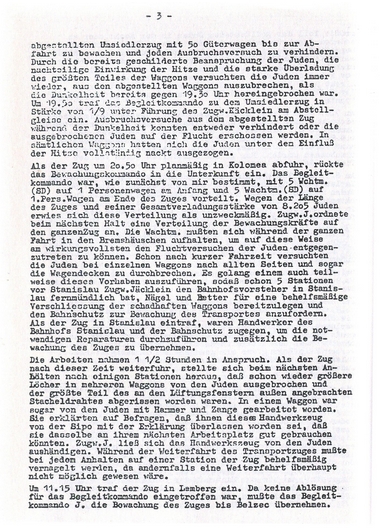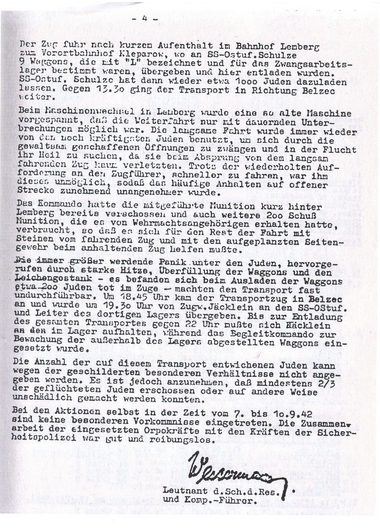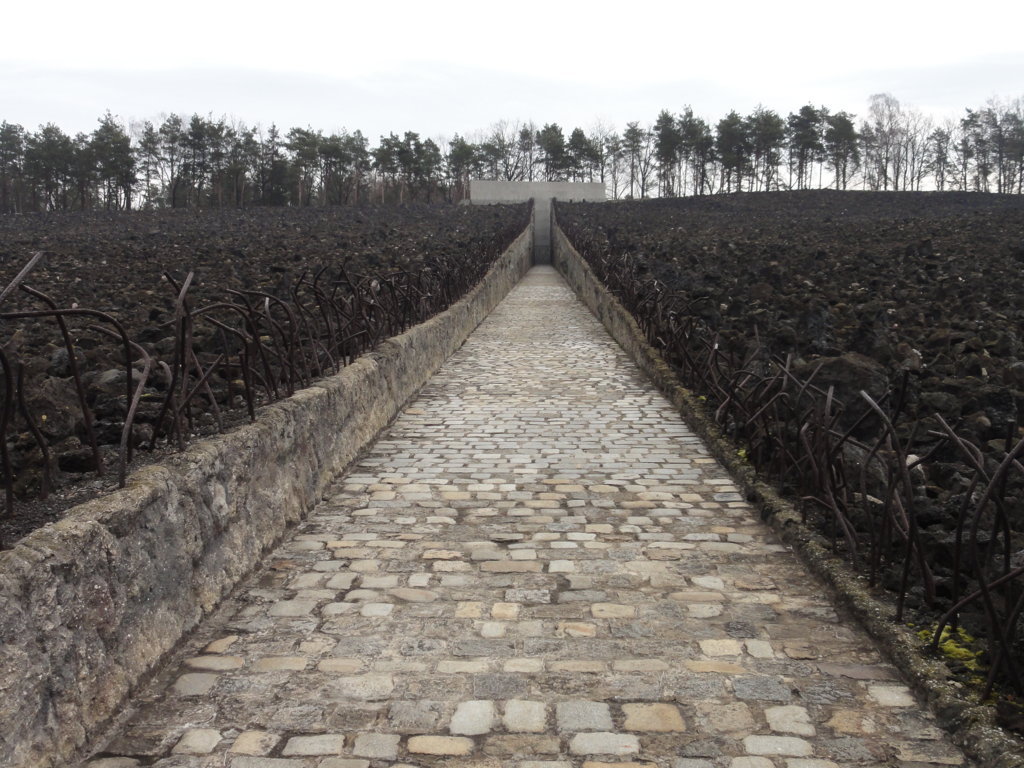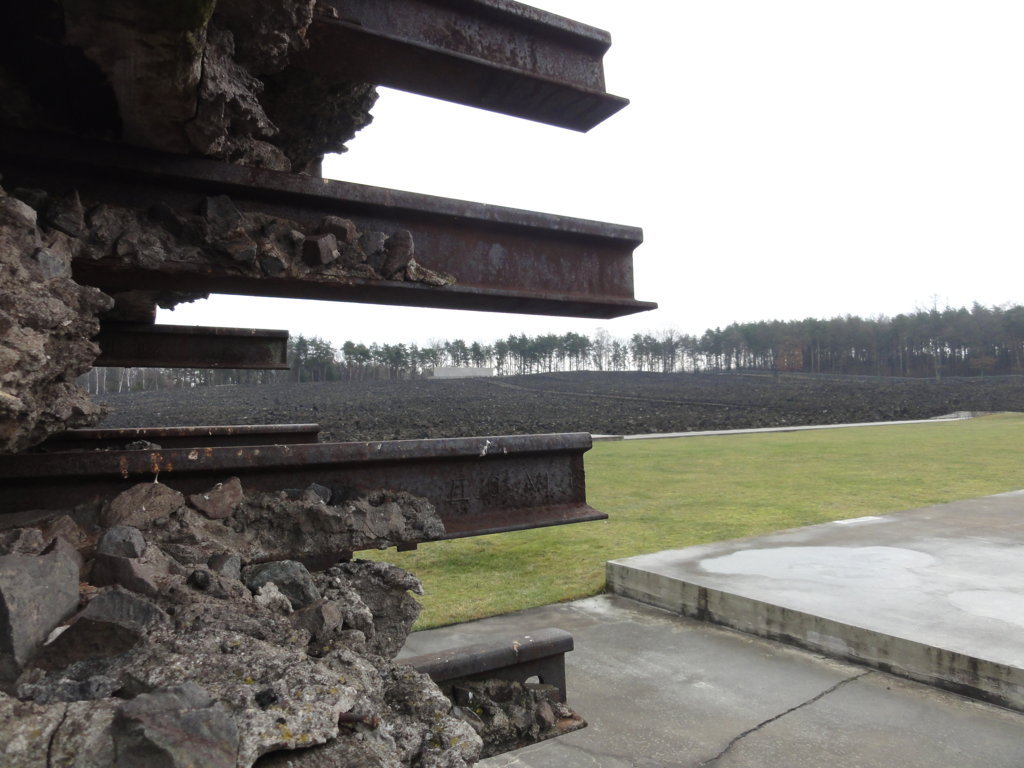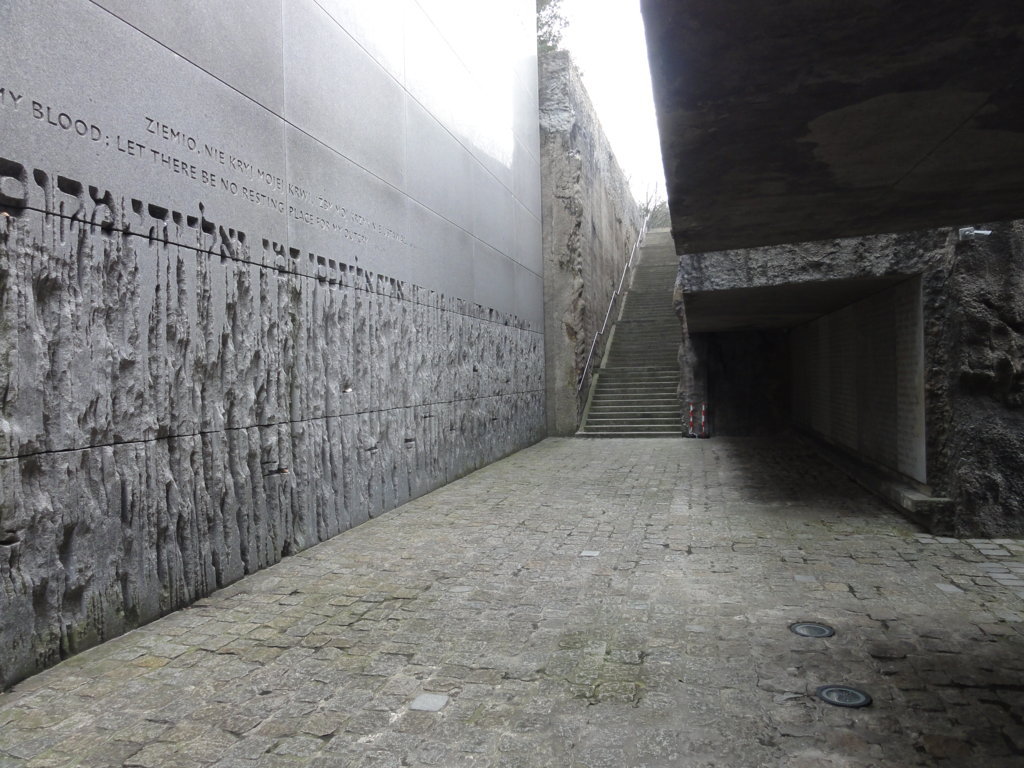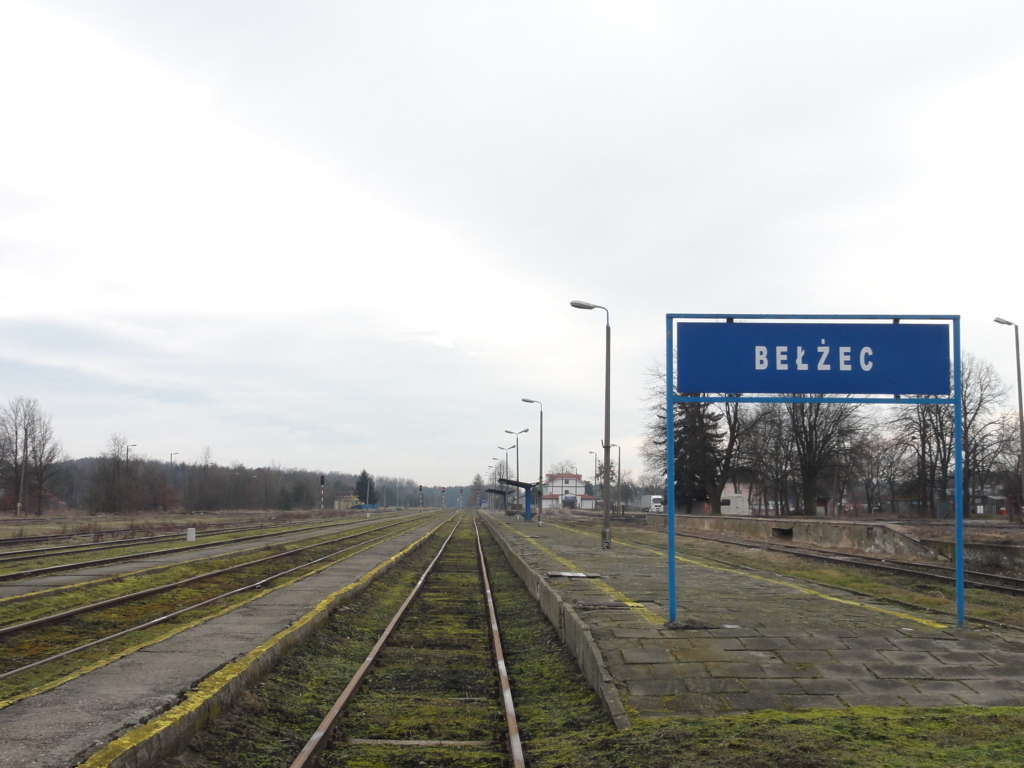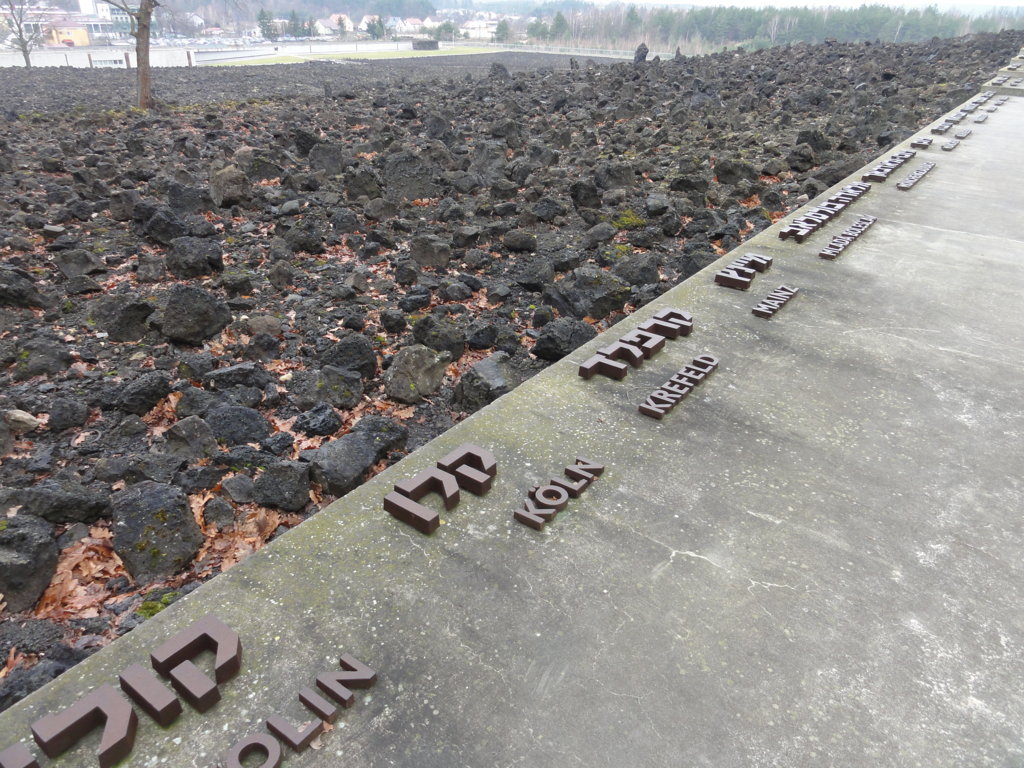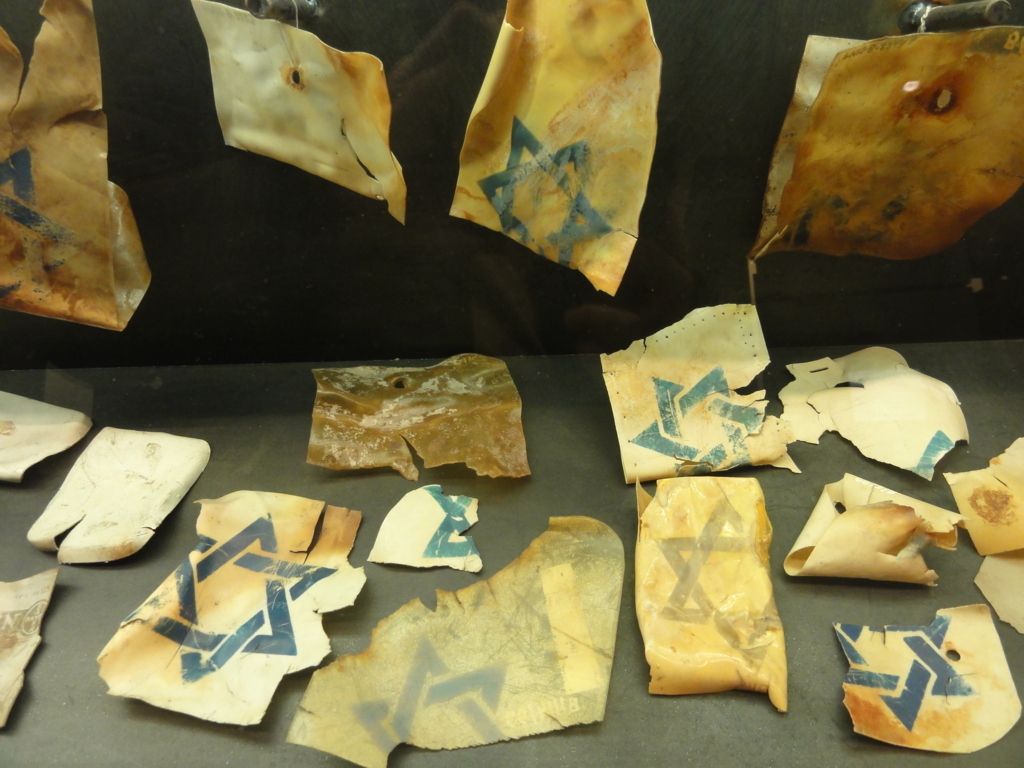Belzec
Start of the »Endlösung«
The Auschwitz-Birkenau extermination camp is generally regarded as a symbol of the systematic genocide of the Jews. However, it is often overlooked that more than one and a half million Jews were murdered in the Belzec, Sobibor and Treblinka extermination camps between 1942 and 1943 as part of “Aktion Reinhardt“, meaning that the number of victims there was even higher than in Auschwitz.
Erarbeitet von den „Euthanasie-Spezialisten“ der T4-Aktion
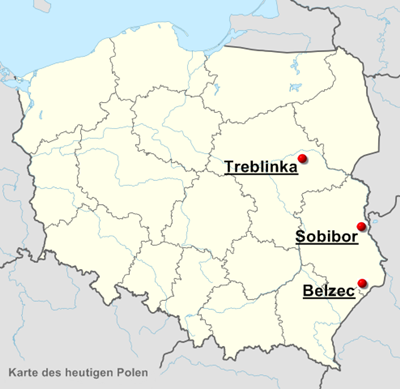
After the Nazi leadership had rejected the original plans to “resettle” all Jews from Europe in the course of 1941 and decided to murder them instead, suitable locations were sought for this project. In the fall of 1941, the Reichsführer SS and “Chief of the German Police”, Heinrich Himmler, commissioned the SS and police leader of the Lublin district in the “Generalgouvernement“, Odilo Globocnik, to prepare the “Final Solution to the Jewish Question”. In mid-October 1941, Globocnik began to form the staff of “Aktion Reinhardt” in Lublin.
In total, the staff of “Aktion Reinhardt” consisted of 453 officers and non-commissioned officers of the SS, who were responsible for the extermination of the Jews living in the Generalgouvernement – the extermination of almost two million people.
Belzec, a small, remote town on the Lublin – Lviv railroad line, was chosen as the site of the beginning of the “Final Solution”. Belzec was located on the border of the districts of Lublin, Galicia and Krakow, an area in which around one million Jews lived.
The design of the extermination camp in Belzec was developed by “euthanasia specialists” who had been involved in the mass murder of the sick, physically and mentally handicapped and the codename “T4-Aktion” on German Reich territory from 1939 to 1941.
On November 1, 1941, construction work began on the extermination camp, which covered an area of 7.3 hectares.
By mid-December, undressing barracks and the first gas chambers had already been erected.
The camp was divided into two areas, the so-called “lower camp” where the transports arrived and where up to 40 wagons could be “processed” at the same time. The entrance gate, administration building and accommodation barracks were also located in the lower camp.
The actual extermination area was located in the second part of the camp, the “upper camp”.
The only connection between the two areas of the camp was a corridor, the so-called “hose”, which led from the “undressing area” of the first section of the camp directly to the entrance of the gas chambers. The “hose” was two meters wide and fenced in on both sides by three-meter-high barbed wire, which was camouflaged with dense branches. In the summer of 1942, this was replaced by a three-meter-high wooden fence.
As the Belzec camp was the first of its kind, it had the character of an “experimental laboratory”. Even camp commander Wirth regarded Belzec as a testing ground for the methods used to implement the “Final Solution”. During the first gassings, carbon monoxide was “experimented” with from bottles.
As this proved to be ineffective, a Soviet tank engine was installed behind the gas chamber building, from which the exhaust gases were fed through pipes.
The first major deportations from the ghetto in Lublin and Lviv arrived in Belzec on March 17, 1942. This date is considered the official start of “Aktion Reinhardt”, the systematic murder of over two million Jews and around 50.000 Roma from the districts of the Generalgouvernement (Warsaw, Lublin, Radom, Krakow and Galicia) in the three extermination camps Belzec, Sobibor and Treblinka.
The deportation took place in freight cars, with the cost of transportation being paid for from the money stolen from the victims – so they paid for their own journey to death.
In August 1942 alone, around 350.000 people were deported to their deaths in the entire Generalgouvernement, over 130.000 of them to the Belzec extermination camp.
Report by the lieutenant of the reserve police and company commander Westermann on the deportation of Jews from Kolomyja and the surrounding area to the Belzec extermination camp in September 1942.
After arriving and “emptying” the wagons, the victims had to line up on the square in front of the ramp, where a member of the camp SS gave a speech. He announced to the arrivals that they had reached a “transit camp”, would now have to shower and would then be transferred to a labor camp with new clothes.
After undressing, the women’s hair was shorn, while the men were herded into the gas chambers. The men were killed first so that they could not resist when they heard the screams of the women and children in the gas chambers.
When the doors of the gas chambers were opened, the bodies were found wedged together. They were soiled with urine, excrement and women often with menstrual blood. Prisoners from the Sonderkommando pulled the bodies out one by one. On the way to the graves, they were searched by the so-called dentists, who broke gold teeth and bridges out of their mouths and searched all body orifices for hidden valuables.
The extermination of the deportees on a transport took about three hours from the time they arrived until the bodies were placed in the mass grave.
Nachdem im Dezember 1942 die Vergasungen in Belzec eingestellt wurden, begann man mit der Exhumierung und den verbrennen der Leichen. Im April 1943 waren alle Leichen verbrannt, die SS ließ das Lager zerstören und auf dem Gelände einen Bauernhof errichten.
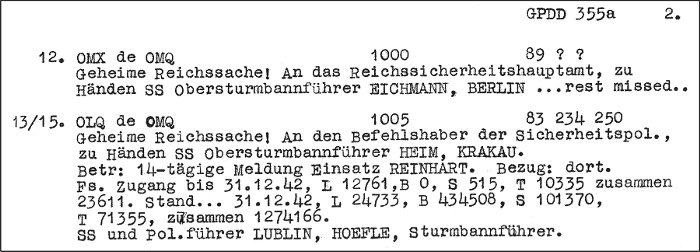
(Quelle: Wikimedia/Public Domain)
The abbreviation “L” in the telegram stands for Lublin/Majdanek, “B” for Belzec, “S” for Sobibór and “T” for Treblinka. These were all sites of “Aktion Reinhard”, the mass murder of Jews.
The memorial in its present form was ceremoniously handed over to the Majdanek Museum in Lublin on June 3, 2004, after extensive archaeological research in the years 1997 – 2002.
Memorial site - Belzec
Literature
Robert Kuwalek
„Das Vernichtungslager Bełżec“
Sara Berger
“Experten der Vernichtung: Das T4-Reinhardt-Netzwerk in den Lagern Belzec, Sobibor und Treblinka”
Nikolaus Wachsmann
“KL. Die Geschichte der nationalsozialistischen Konzentrationslager”
